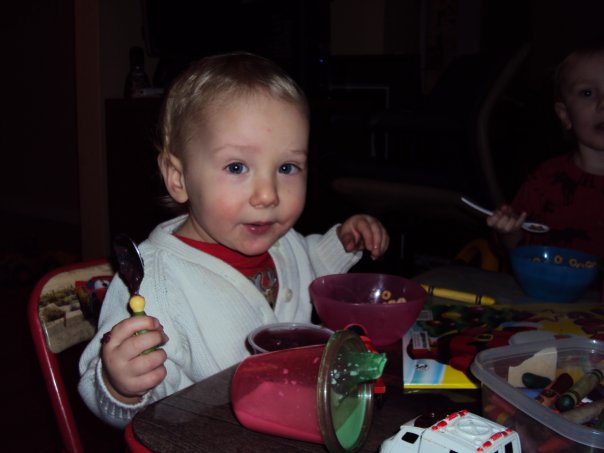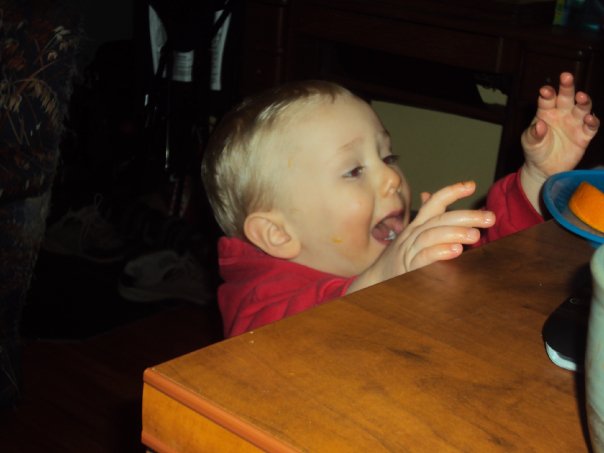 I believe that children require opportunities to learn, explore, and socialize and that they also need down time to rest and recharge. I also believe that kids are great at expressing their needs as long as the adults in their lives are able to tune in, pay attention and learn how young kids communicate. Our days are programmed to keep little hands, imaginations and bodies busy but also with room for plenty of child-directed play.
I believe that children require opportunities to learn, explore, and socialize and that they also need down time to rest and recharge. I also believe that kids are great at expressing their needs as long as the adults in their lives are able to tune in, pay attention and learn how young kids communicate. Our days are programmed to keep little hands, imaginations and bodies busy but also with room for plenty of child-directed play.
I choose a new theme each week and focus our stories, crafts, snacks and games to help reinforce the concept. Activities are tailored to children who are between 1 and 3, since this is where most of my gang fits. Some themes include bugs, farm animals, jungle friends, spring, summer, autumn, winter, colors, things that go, the food groups, my body, my family, etc.
Here is a sample day, although times and activities are flexible to fit with kids:
7:00 AM OPEN
7:30 - 8:00 AM Breakfast and clean up.
8:00 - 10:00 AM Play Area Activities related to our theme for the week.
10:30 - 11:30 AM Neighbourhood adventure walk, playground time.
11:30 - 12:00 PM Play time (while I get lunch!)
12:00 - 12:30 PM Lunch and clean up.
12:30 - 1:00 PM Story time, get settled
1:00 - 3:00 PM Naps and Quiet time (free play as we wake up)
3:00 - 3:30 PM Afternoon snack.
3:30 - 5:00 PM Play Area Activities (children choose)
5:00 - 6:00 PM Play time and check outs.
* Children are never forced to participate in an activity or game, although I do try and entice them into it. Free play is always an option for those kids who may need a break or some alone time. *
I have a nutrition degree and really believe in the importance of variety, providing options, and exposing kids to new and different foods. Children are more likely to develop a healthy eating pattern, maintain a healthy weight, and develop appropriately cognitively, socially and emotionally when they eat well and have positive eating role models as youngsters. Calcium, protein, magnesium, vitamins B, C and D are important for growth in children and so I emphasize fruits and vegetables and dairy products in our menu. Although I never force anybody to eat anything and I do accommodate dietary allergies and customs, I don't make separate meals for "fussy" eaters.
Here are some examples, although I post our menu each week for parents to review, provide input, or ask questions:
 Breakfast (3-4 food groups):
Breakfast (3-4 food groups):
1. Cereal with milk, fruit, juice.
2. Whole wheat pancakes with butter and syrup, fruit, milk.
3. Cheesy toast, fruit, juice.
4. Scrambled eggs, hash browns, fruit, milk.
5. Oatmeal with raisins/apples/milk/sugar, fruit, juice.
Snacks (2-3 food groups):
1. Fruit and yogurt, water.
2. Crackers and cheese, water.
3. Fruit salad, chocolate milk.
4. Banana bread (kids help make in center time) and milk.
5. Rice krispie squares and fruit, water.
6. Cookies (kids help make in center time), applesauce, milk.
7. Ants on a log (celery, peanut butter, raisins), yogurt, water.
8. Carrots and dip, cheese, chocolate milk.
9. Fruit, cheese, milk.
10. Pretzels, canned fruit, milk.
Lunch (3-4 food groups):
1. Spaghetti and meat balls, tomato sauce, canned fruit, milk.
2. Grilled cheese sandwiches, veggies and dip, pudding, water.
3. Kraft dinner casserole (with ham and mixed veggies), cookies, milk.
4. Vegetable soup, cheesy buns, frozen yogurt, juice.
5. Ham (or PB & J) sandwiches, veggies and dip, applesauce, chocolate milk.
